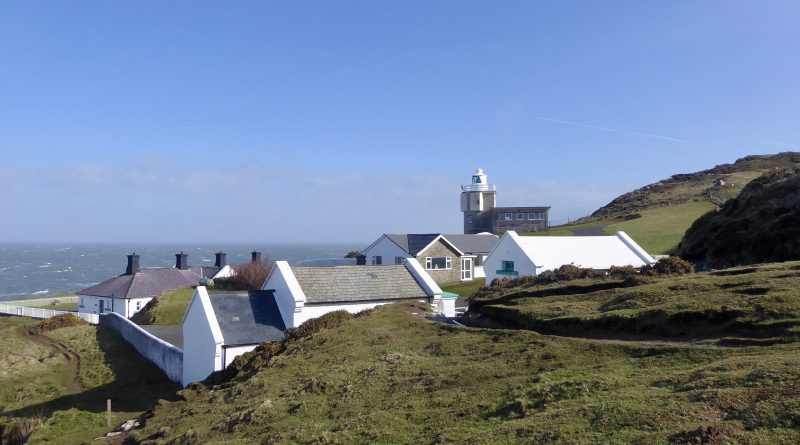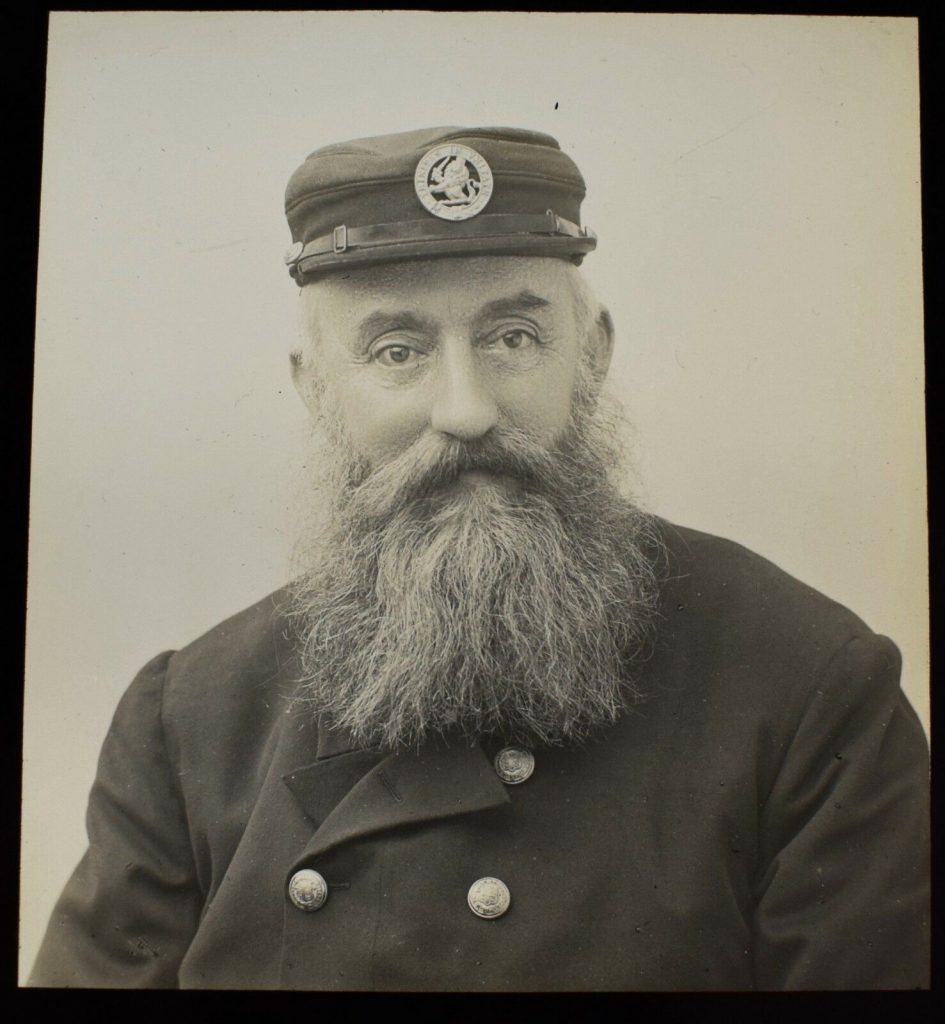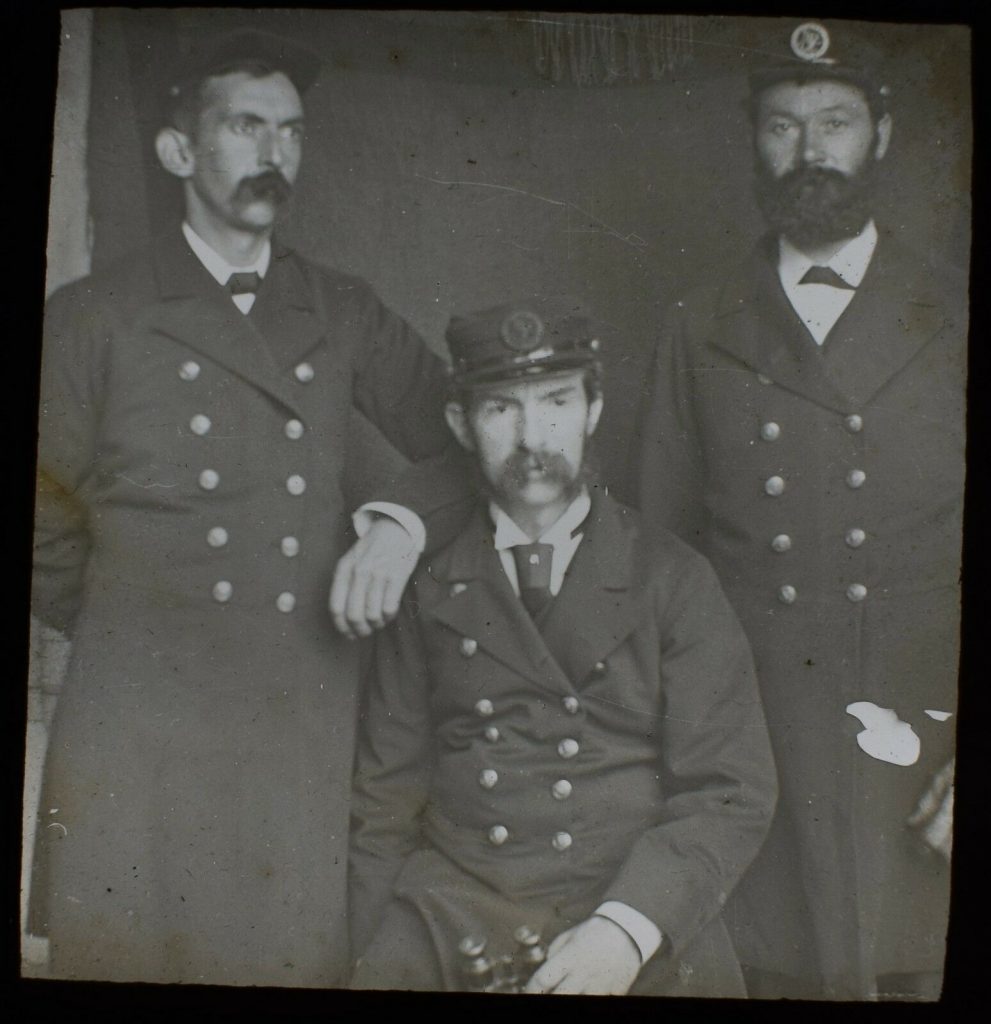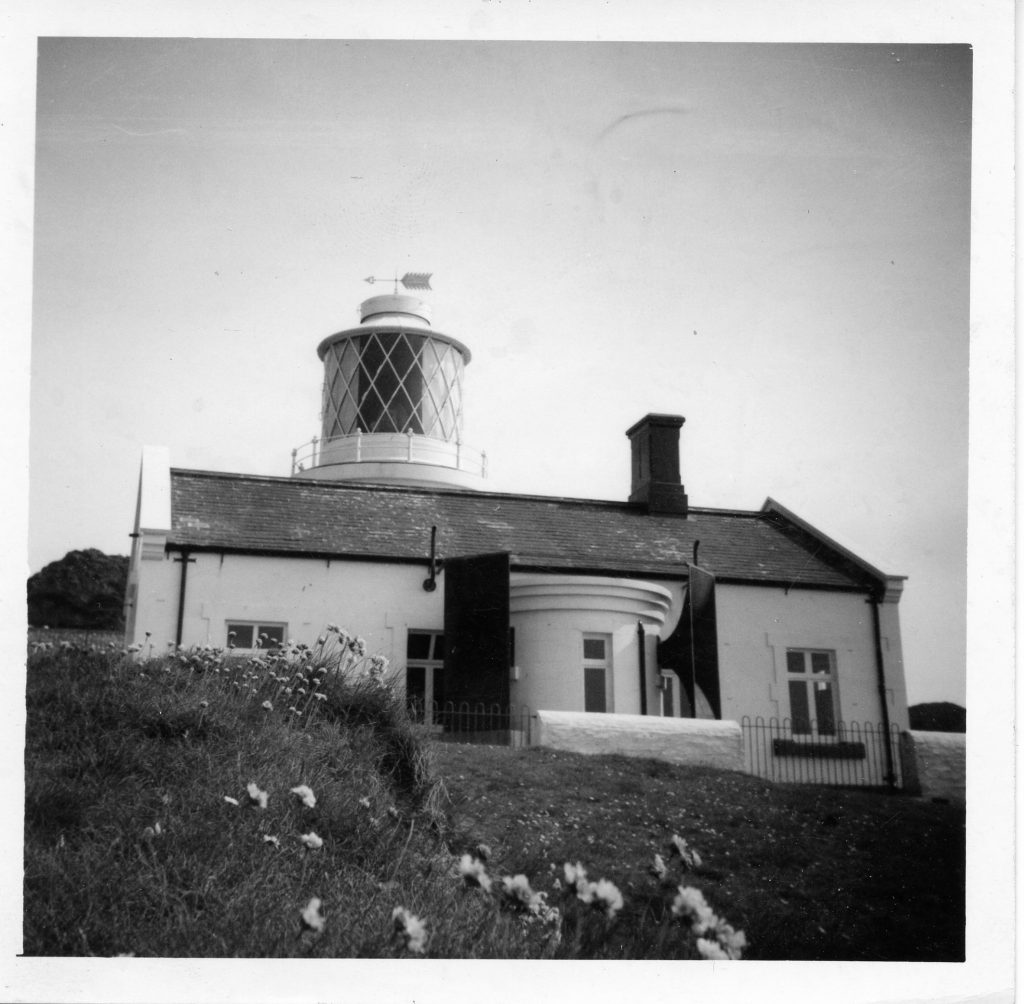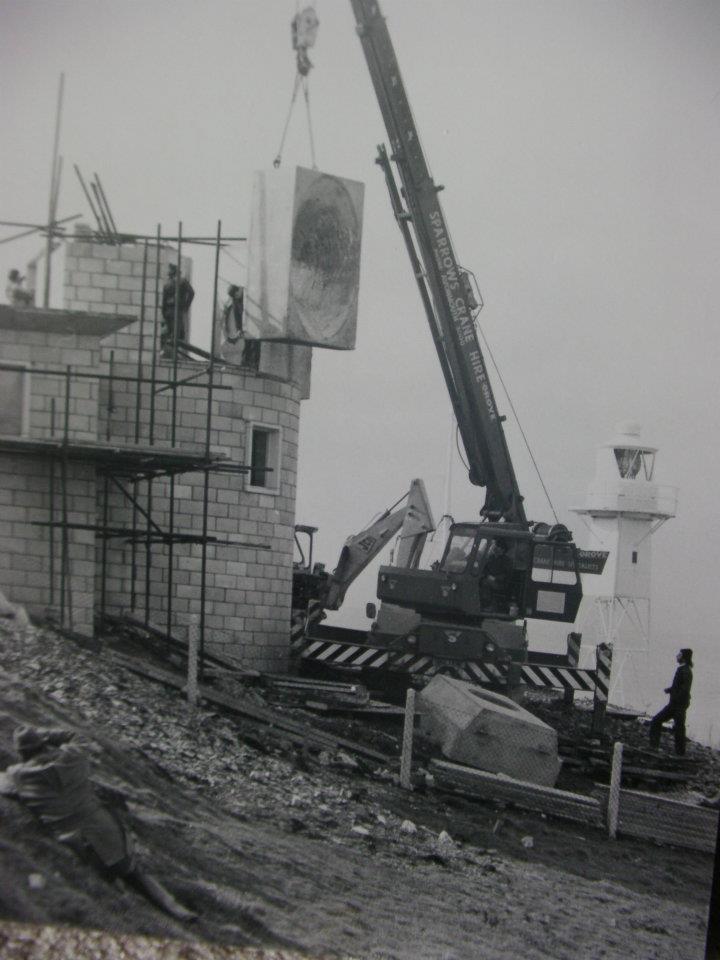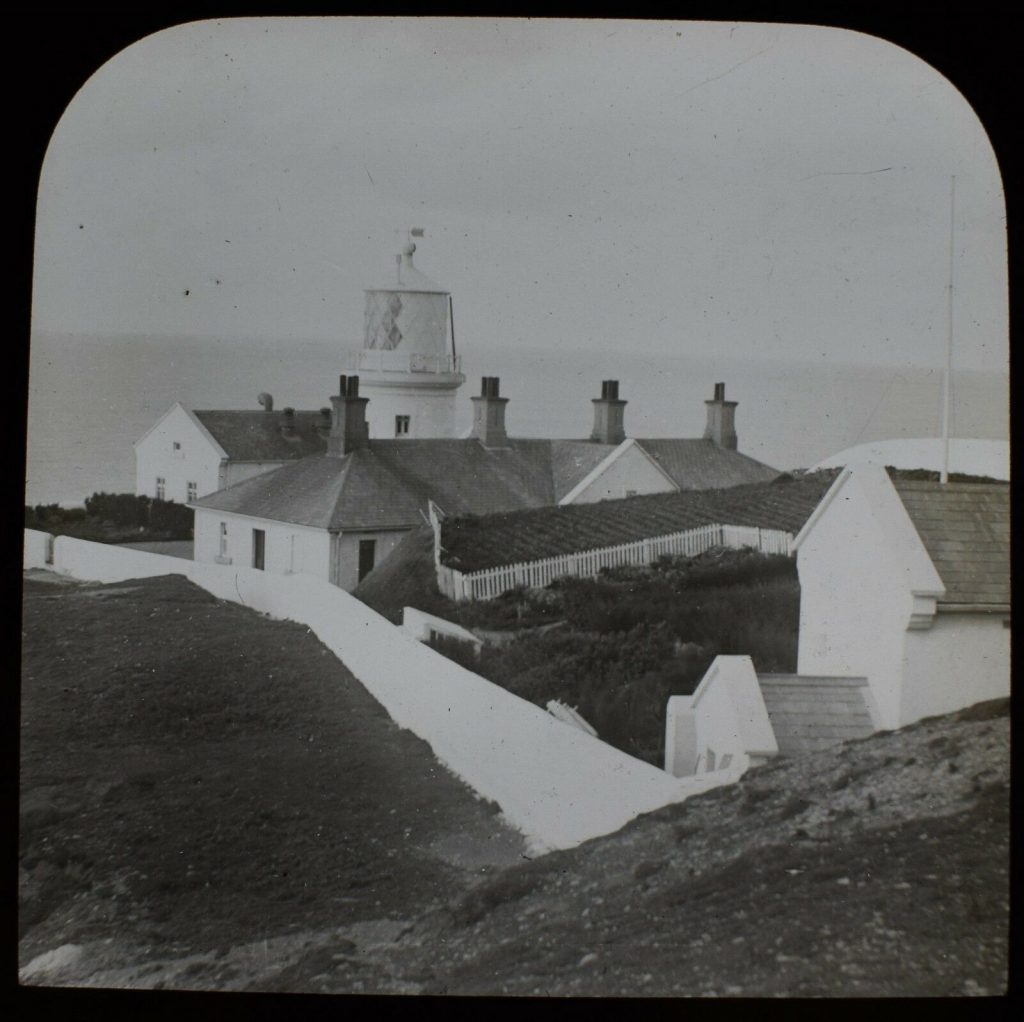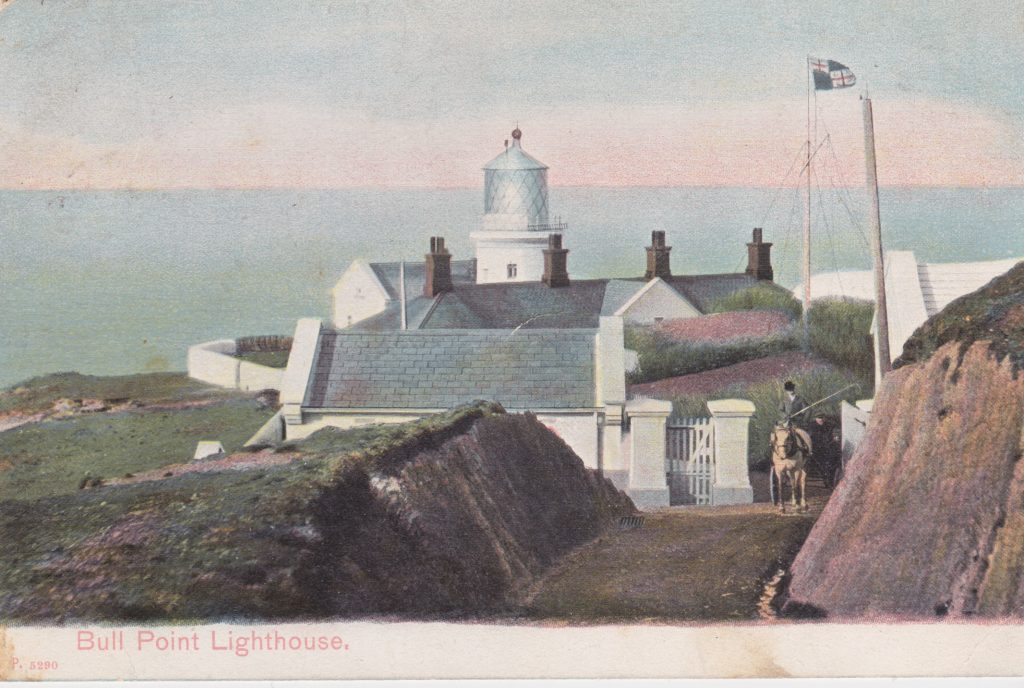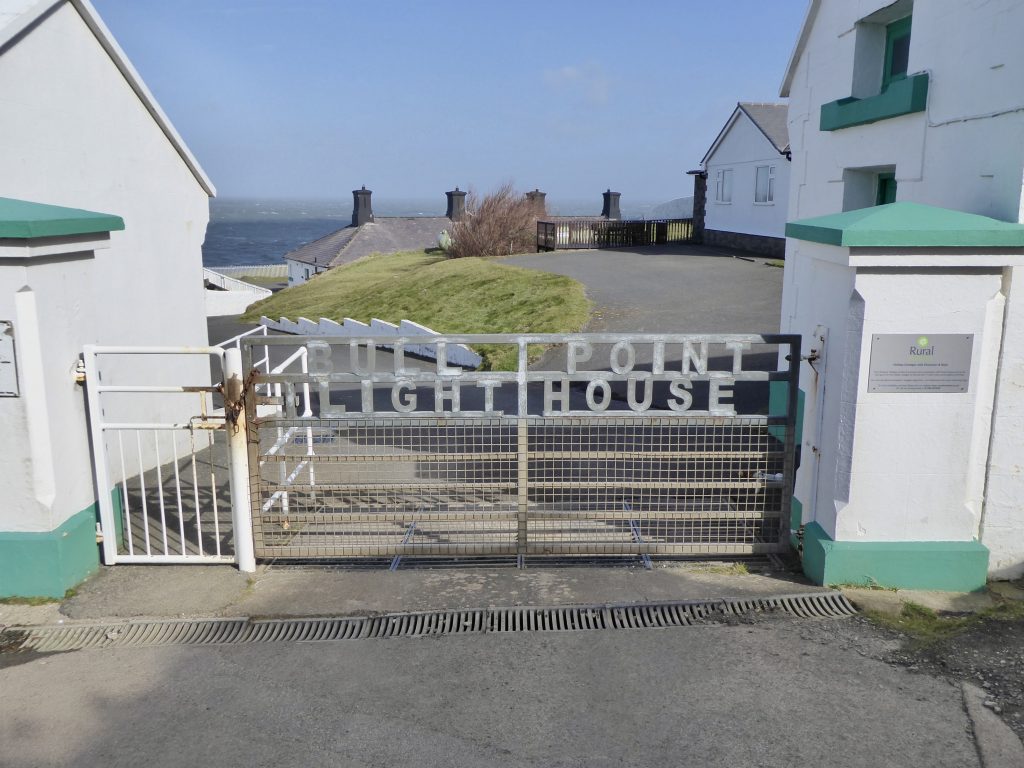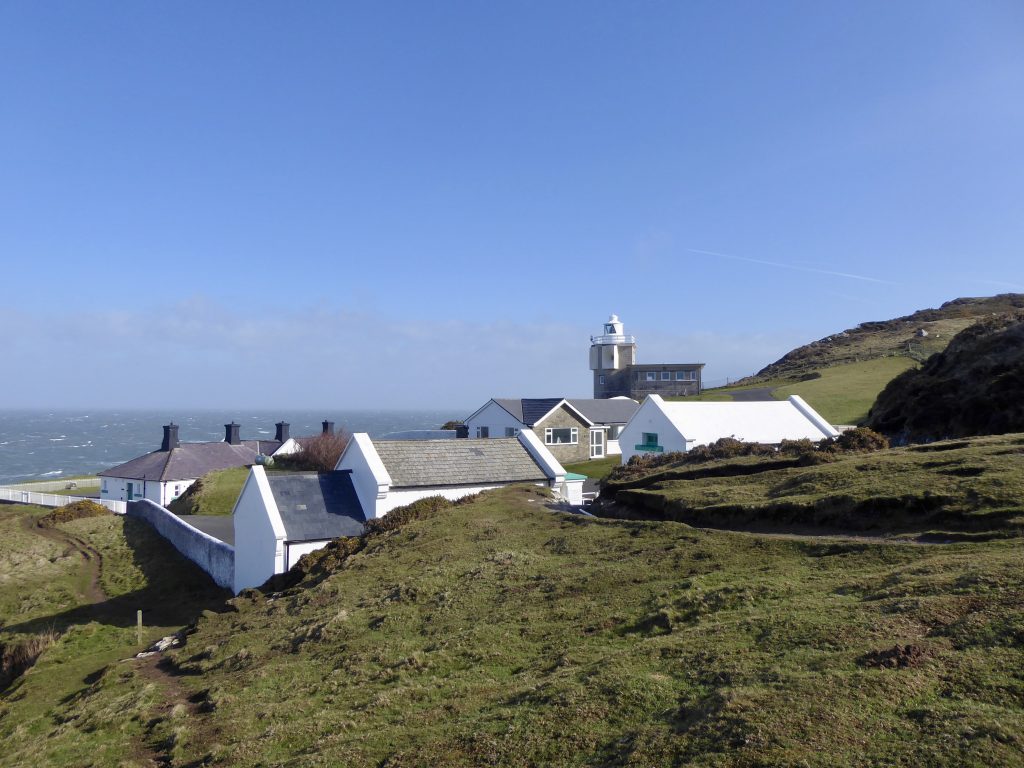Bull Point Lighthouse
| Bull Point lighthouse is situated in Mortehoe. It was originally constructed in 1879, to guide vessels navigating the North Devon Coast.The plans for the lighthouse started in 1876, when two engineers from the Board of Trade visited the coastline around Morte with the view of ascertaining the most serviceable spot for the erection of a lighthouse. They favoured Bull Point, and a roadway was planned from Morte to the Point. The estimated cost to build the lighthouse, the road and cottages for the keepers was £10,000.
However the decision to build the lighthouse at Bull Point, rather than at Morte Point was a controversial one, that many local mariners disagreed with. Morte Stone was considered a danager to vessels in the area, with many people being killed here, when upto fifty vessels could be passing the stone, bound from the Channel. The mariners believed that many “could always weather Bull Point” but talked of Morte Stone “as the dreaded spot, which is difficult on a dark night”. The decision, however, fell in favour of Bull Point, and this is where the lighthouse was eventually built. Mr George Knott would become the first principal lighthouse keeper based here. The Knott family, had manned lighthouses for generations, and are believed to hold the record for longest continued service of manned lighthouses from one family. George was the fourth generation to man a lighthouse, he started his career at South Foreland. George was well known for his wooden carved models of the lighthouses he worked in, the model of Bull Point Lighthouse is believed to be in Plymouth Museum. The opening of Bull Point Lighthouse was reported in the London Gazette on the 10th June 1879 The lighthouse was finally opened in June 1879, there was no formal proceedings to the opening. The final building of the lighthouse was done by Mr R. T. Hookway of Bideford and came in just under budget at just over £7000. The buidling consisted of a block of dwellings for three keepers and their families, a fog signal horn, tower, oil store, general store, piggeries and office. The fog signal was worked by a pair of caloric engines manufactured by Brown & Co of New York and the lantern and light were manufactured by Chance Brothers of Birmingham. Like all buildings slight modifications and updates were made over the years, with a foghorn added in 1919 and then electrified in 1960. The lighthouse continued to operate without any major incidents, until 1972. It was the 18th September 1972 when the keeper of the lighthouse reported ground movement, particulary in the engine room. He observed that 2 fissures were opening, which caused him some concern. In the early house of Sunday 24th September, 15metres of the cliff face crashed into the sea, with a further 15 metres subsiding steeply causing deep fissures to open along the boundary wall. Walls cracked and the engine/fog signal station partly collapsed, leaving it in a dangerous condition and putting the fog signal out of action. A temporary tower, which had been in use at Braunton Sands and had been given to the Nature Conservancy, was borrowed back and the optic installed on top of it. This tower was used at the Bull Point Lighthouse for nearly two years, until Trinty House erected a new tower further inland. The lighthouse was designed and built so that all the equipment from the old lighthouse was utilised and after some modification made, this was completed in 1974 at a cost of £71,000 and is currently in use. It was fully automated from completion. The diaphone foghorn was switched off in 1988 and the lighthouse was automated in 1995. The site can be visited by an adjacent public footpath. The old lighthouse keepers’ cottages are now being let out to tourists as self catering holiday establishments. |
